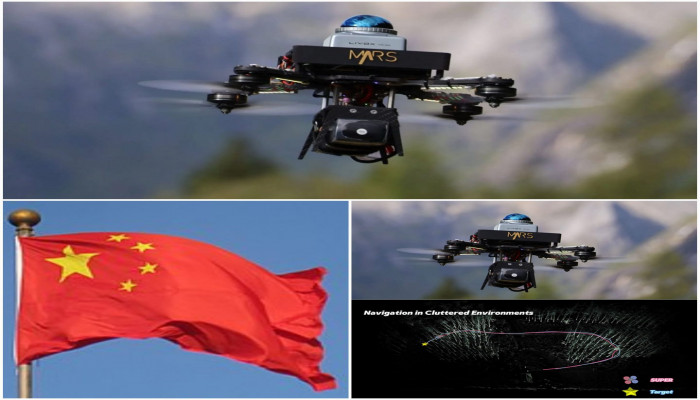Chinese researchers develop LiDAR-equipped autonomous flying SUPER
- In Reports
- 06:52 PM, Feb 06, 2025
- Myind Staff
University of Hong Kong researchers have disclosed an outstanding robot which can fly and is designed to navigate through complex environments without any hitch. Named SUPER, the quadcopter drone can reach up to 20 metres speed per second, all while avoiding every peril. But it's not just a matter of speed. The drone is so intelligent that it can detect the thinnest wire and move in the dark, which puts it ahead of regular drones.
A study published in Science Robotics showcased the diverse applications of SUPER, highlighting its potential in areas such as search and rescue, law enforcement, and military reconnaissance. While its capabilities make it well-suited for demanding tasks, its true strength lies in its intelligence, powered by cutting-edge LiDAR technology.
Unlike most drones that rely on cameras and traditional sensors, SUPER utilises LiDAR (3D Light Detection and Ranging) technology. By emitting laser pulses, it scans its surroundings and constructs a highly detailed real-time map. This allows the drone to function effectively even in low-light conditions where conventional drones may struggle.
SUPER’s onboard computer continuously processes spatial data, generating two types of flight paths, one prioritising safety and the other designed for efficient exploration. With an impressive detection range of up to 70 meters, it swiftly identifies obstacles and makes instant course adjustments to avoid collisions. This combination of accuracy and adaptability gives SUPER a significant edge over other drones.
To demonstrate SUPER's capabilities, the researchers directly compared it with the DJI Mavic 3, a commercially available drone. While the DJI drone could easily avoid larger obstacles, it struggled with smaller, thinner ones, such as wires with a diameter of just 2.5 millimetres. In contrast, SUPER smoothly navigated around all obstacles, thanks to its high-resolution point cloud data.
The tests also involved challenging environments like dense forests, where SUPER stood out by efficiently tracking moving targets and manoeuvring through trees without any issues. This level of precision makes it ideal for situations where speed, autonomy, and obstacle detection are essential.
With its impressive speed, intelligence and adaptability, SUPER is poised to be used in real-world situations where traditional drones typically fall short. Whether for search-and-rescue missions in jungles or covert military operations, this autonomous flying robot appears ready for any task, with no pilot needed.







Comments